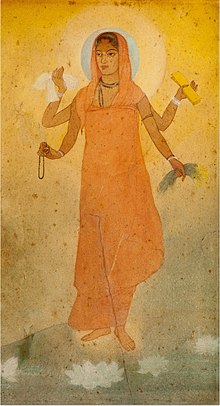
The Swadeshi movement was a self-sufficiency movement that was part of the Indian independence movement and contributed to the development of Indian nationalism.[1] Before the BML Government's decision for the partition of Bengal was made public in December 1903, there was a lot of growing discontentment among the Indians. In response the Swadeshi movement was formally started from Town Hall at Calcutta on 7 August 1905 to curb foreign goods by relying on domestic production.[2] Mahatma Gandhi described it as the soul of swaraj (self-rule). The movement took its vast size and shape after rich Indians donated money and land dedicated to Khadi and Gramodyog societies which started cloth production in every household. It also included other village industries so as to make village self-sufficient and self-reliant.[3] The Indian National Congress used this movement as arsenal for its freedom struggle and ultimately on 15 August 1947, a hand-spun Khadi tricolor Ashoka Chakra Indian flag was unfurled at Princess Park near India Gate, New Delhi by Jawaharlal Nehru.[4]
The government's decision to partition Bengal was made in December 1903. The official reason was that Bengal, with a population of 78 million, was too large to be administered; the real reason, however, was that it was the center of the revolt, and British officials could not control the protests, which they thought would spread throughout India. Reappointed George Curzon, 1st Marquess Curzon of Kedleston Viceroy of India (1899–1905), in August 1904, he presided over the 1905 partition of Bengal.
In ‘Lion and the Tiger : The Rise and Fall of the British Raj, 1600-1947’, Denis Judd wrote: “Curzon had hoped… to bind India permanently to the Raj. Ironically, his partition of Bengal, and the bitter controversy that followed, did much to revitalize Congress. Curzon, typically, had dismissed the Congress in 1900 as ‘tottering to its fall’. But he left India with Congress more active and effective than at any time in its history.”[5]
Bengal was divided by religion: the western half would be primarily Hindu, and the eastern half would be primarily Muslim. This divide-and-conquer strategy sparked the Swadeshi movement. The British reunited Bengal in 1911 and shifted their capital to New Delhi. The Swadeshi movement took on a new meaning after the reunification of Bengal.
